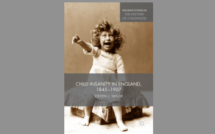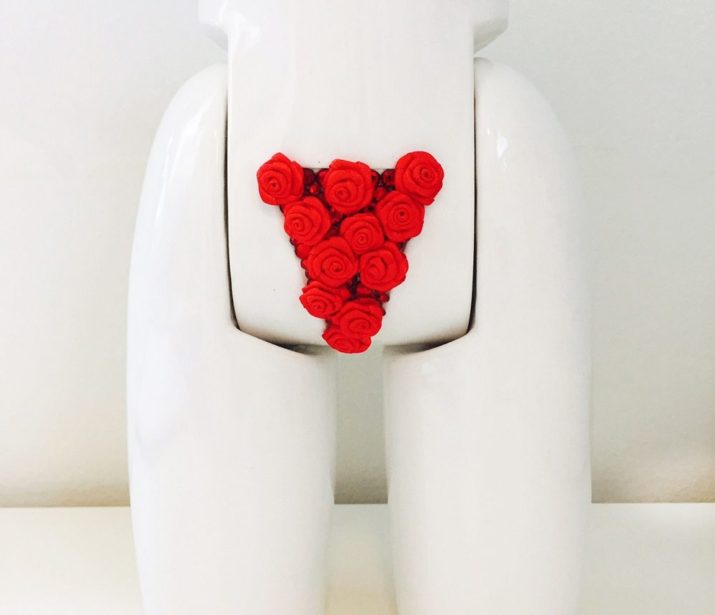
This is part of our special feature The Gender of Power.
This series by Allie Pohl, Brenda Oelbaum and Craig LeBlanc highlights societal pressures on sex and gender roles, offering idealized bodies whereby the tall and the slim define the desirable female, as guns, muscles and sports define the true man. The three artists presented here lash out against these enforced ideals and question their validity. Beauty can be found in all body types as the Venus of Willendorf Project, modeled after an ancient fertility goddess, shows. While Pohl and Oelbaum see patriarchy at fault for the pressures imposed on the female body, LeBlanc’s work reveals that men are just as much under pressure in a society that considers aggression and competitiveness as the templates by which a man’s worth is understood.
–Nicole Shea for EuropeNow
Allie Pohl
I am interested in critiquing how pop culture, social norms, and technology effect our society’s desired physical form. We are constantly inundated with images that culturally outline beauty. Often times, these commercially packaged versions of beauty are simply illusions. My work reflects this repetitive effect, referencing multiple devices that pressure individuals of both sexes to strive for an idealized version of “perfection.”
Beauty has transformed into an attainable product as a result of society’s addiction to achieving the ideal image. I created the Ideal Woman by digitally enhancing Barbie to fit into Western society’s archetype of female measurements: 36-24-36. As an American cultural icon, born in 1959 at the dawn of the Post-War consumer culture, Barbie was intended as a toy for young girls, but its ubiquitous presence resulted in a brand that represents the idea of physical perfection. The symbol used throughout my Ideal Woman series was developed to question these social constructs of perfection and the demands made on a woman’s body, and to force the viewer to be aware of the unattainable nature of this “cookie-cutter” form. Meant as a symbol of an anti-perfection, the shape is repeated throughout my work in sculpture, video, installation, and jewelry design.
Peacocking: Since online dating moved to apps, particularly Tinder, I chose to explore how men market them themselves to women when it is image based. From my research, I created merit badges, based on the traditional boy-scout badges, representing the qualities of “ideal masculinity.” I also made sculptures of mannequin parts from different decades, finished in the most popular car color of the corresponding decade, to highlight how contemporary men are also subject to society’s notions of perfection.
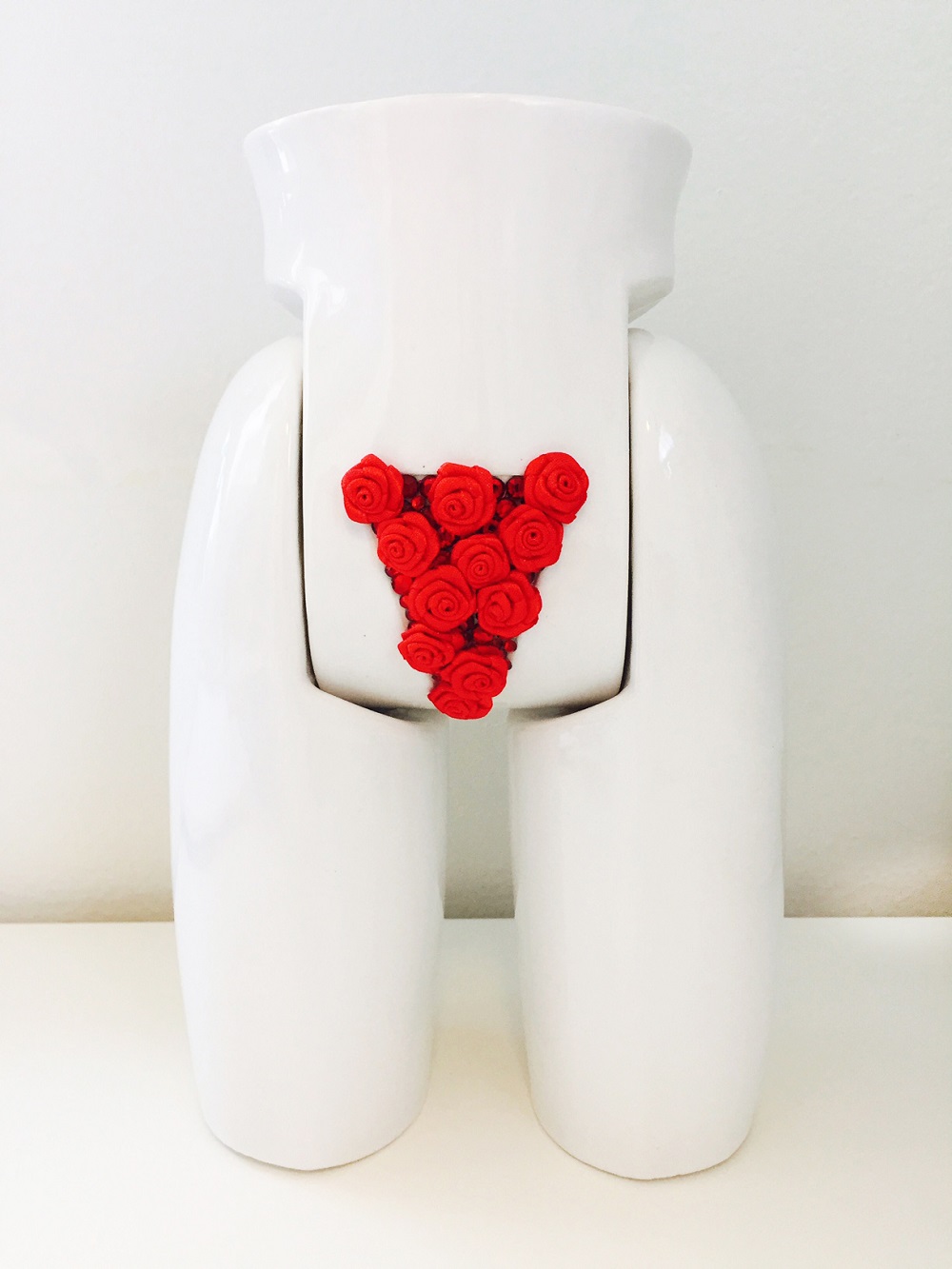
Ideal Woman: Bed of Roses, porcelain, swarovski crystals, cloth roses, 9.5 x 5.5 x 3.5 inches, 2015
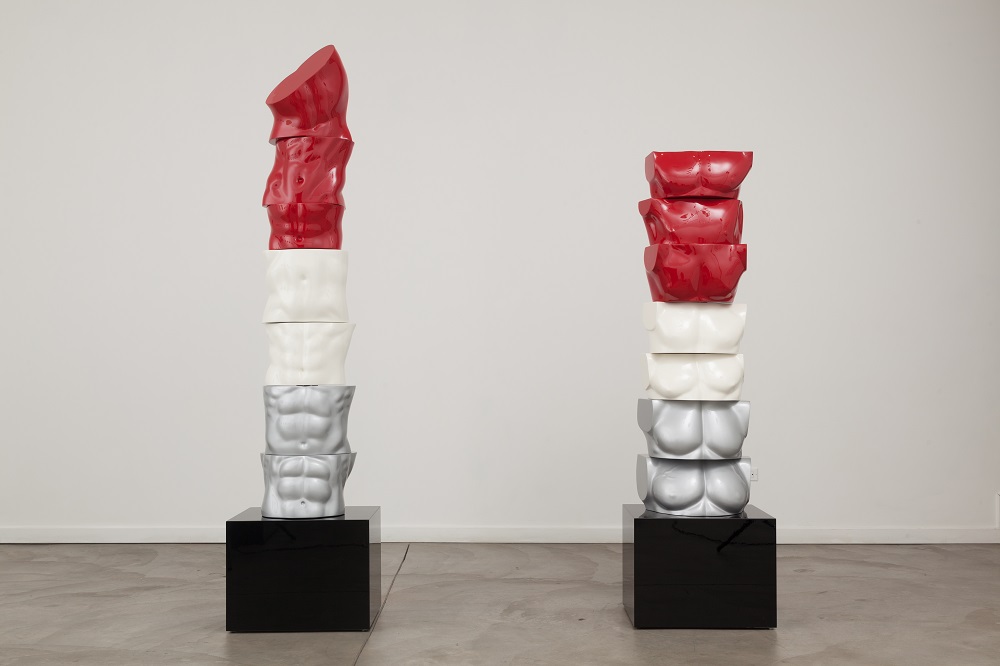
Peacocking: Abs 1, fiberglass, automotive paint, metal and wood, 69 x 15.25 x 20.5 inches, 2013
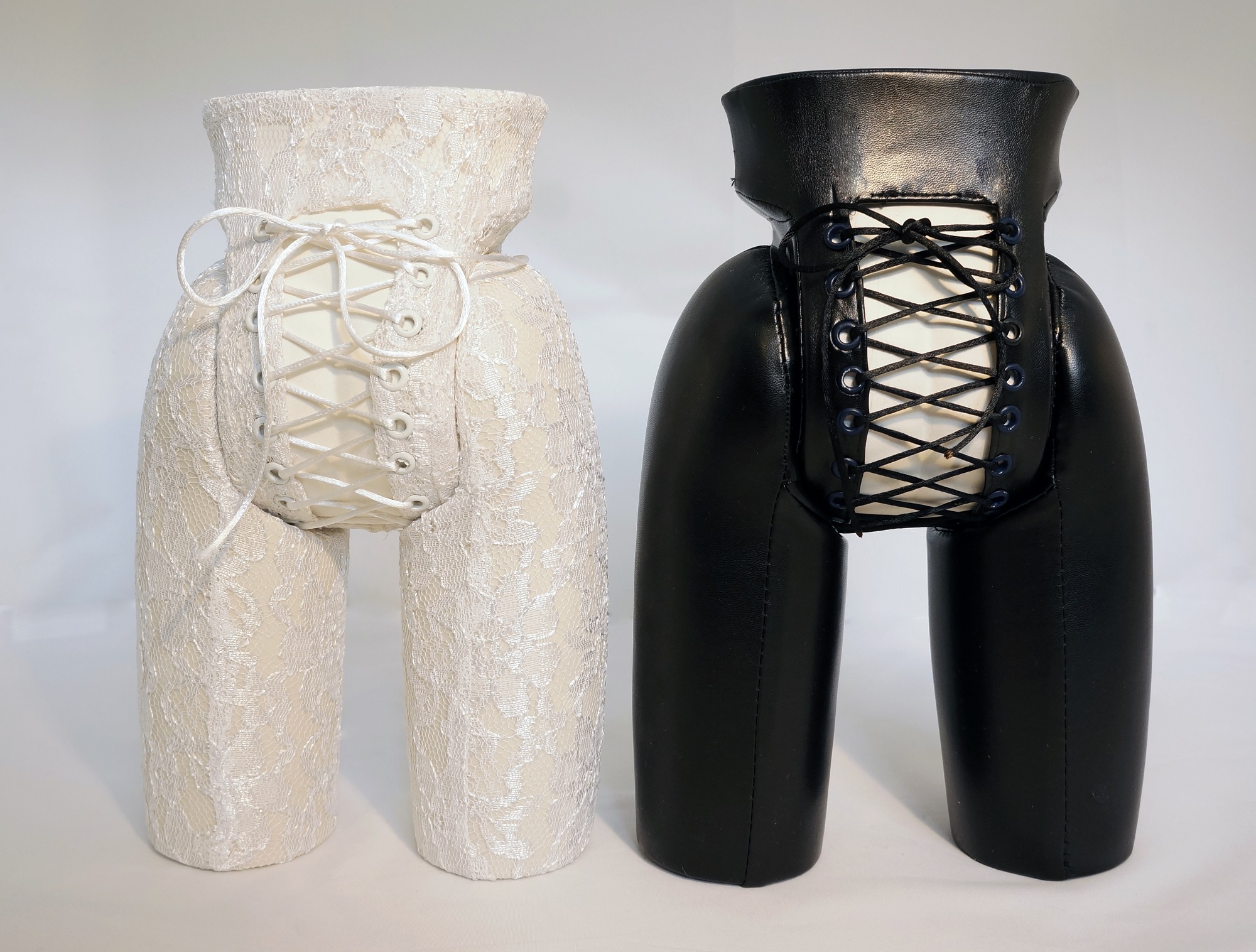
Ideal Woman: Leather and Lace, porcelain, leather, lace, ribbon, 9.5 x 5.5 x 3.5 inches each, 2014
Los Angeles-based conceptual artist Allie Pohl launched her IDEAL WOMAN series to challenge social constructions of perfection. Pohl created the symbol by digitally enhancing Barbie’s proportions to fit Western society’s ideal female measurements of 36-24-36. The series has started a conversation around female empowerment, a redefinition of the “ideal” and serves as a reminder that every woman is the IDEAL WOMAN – perfectly imperfect. Pohl’s art work has been exhibited in galleries and museums across the U.S. including: Orlando Museum of Art, Art Basel Miami, Dallas Art Fair, Cornell Museum of Art and the Denver National Airport. Pohl launched the IDEAL WOMAN jewelry line as a means of making the avatars powerful message accessible and widespread. IDEAL WOMAN jewelry has been adorned by celebrities such as Lena Dunham, Sophia Bush, Rosario Dawson and Jill Soloway and has been featured in publications such as Vouge, Nylon, Art Slant, New York Times, LA Times, Paper Magazine, and ELLE.com Allie Pohl received a Bachelor of Arts from Hamilton College before attending Parsons, The New School for Design, in New York City, where she received an Associates of Applied Science in Graphic Design. She then went on to receive her MFA in Electronic Media Arts & Design from the University of Denver.
Brenda Oelbaum
The Venus of Willendorf Project is an intensely personal response to the lucrative diet industry and a culture obsessed with being slender at any cost. Weight loss is a battle steeped in gender politics and patriarchal ideologies around the female body and sexuality. For most of my adult life, I have fought with my weight, losing and gaining as I struggled to fit into smaller clothes and a society that abhors fatness. As a biological response to years of dieting, my body became bigger and bigger. Instead of loathing myself, I learned to embrace my size and raise awareness of the factors that subjugate women into submitting to an unrealistic ideal of how they should look. Through the image of this ancient fertility goddess, I honor a time when the fullness and fecundity of women’s bodies were celebrated and not hidden.
Photo credit: Amanda Nichol Rogers
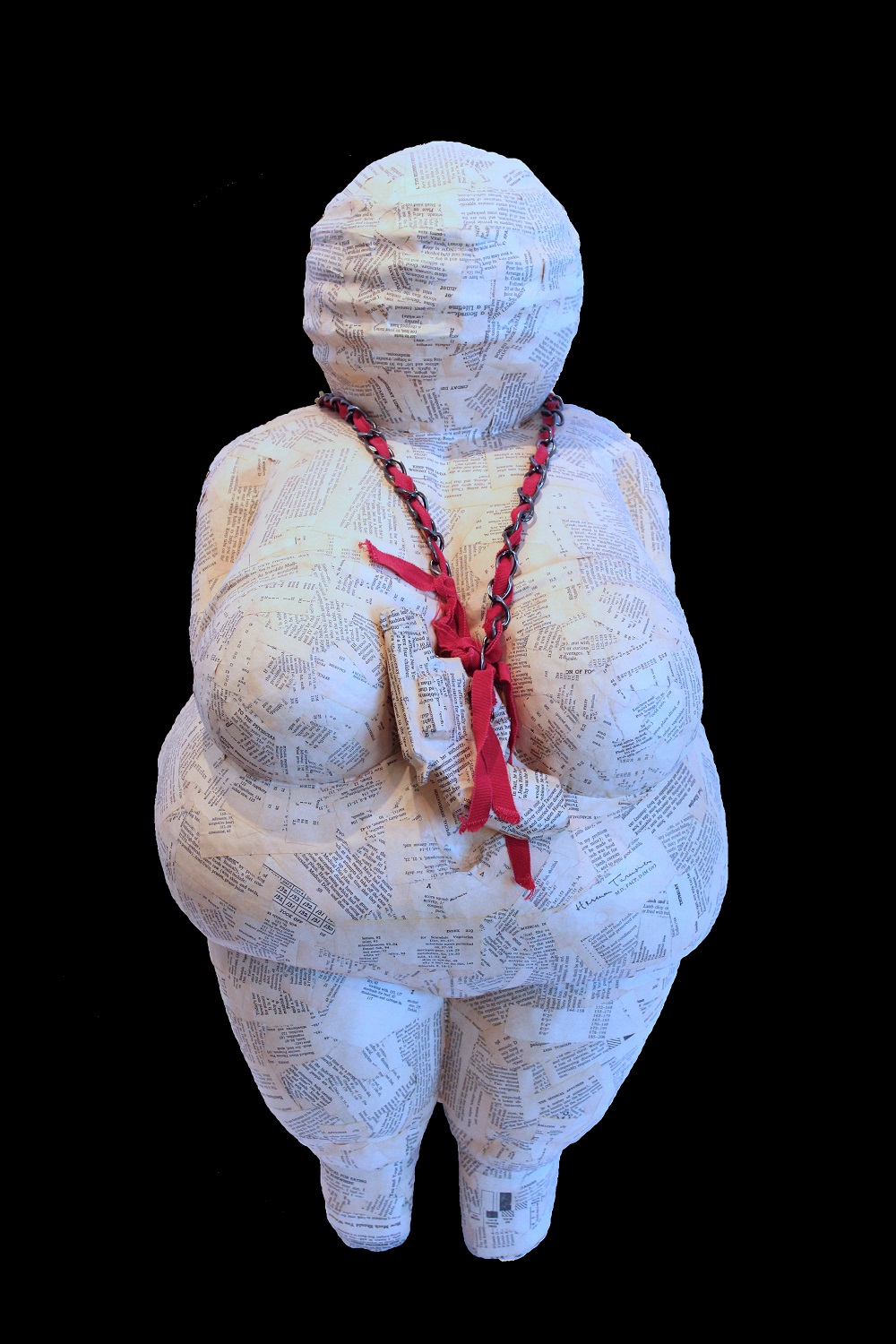
Scarsdale, “The Venus of Willendorf Project,” mixed media paper machè diet books, white flour and water, 36″ x 15″ x 16″, 2010
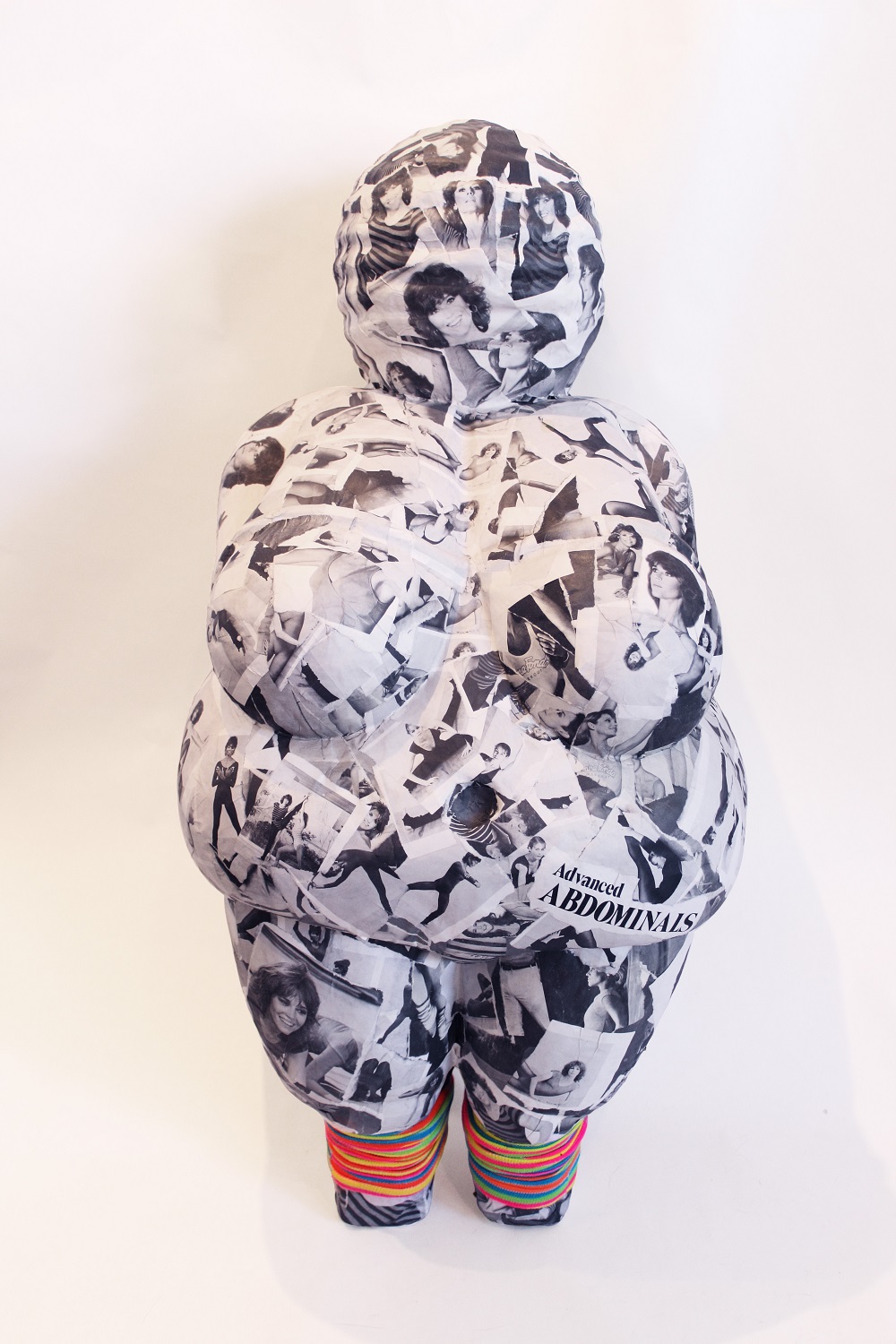
Fonda, “The Venus of Willendorf Project,” mixed media paper machè diet books, white flour and water, 36″ x 15″ x 16″, 2010
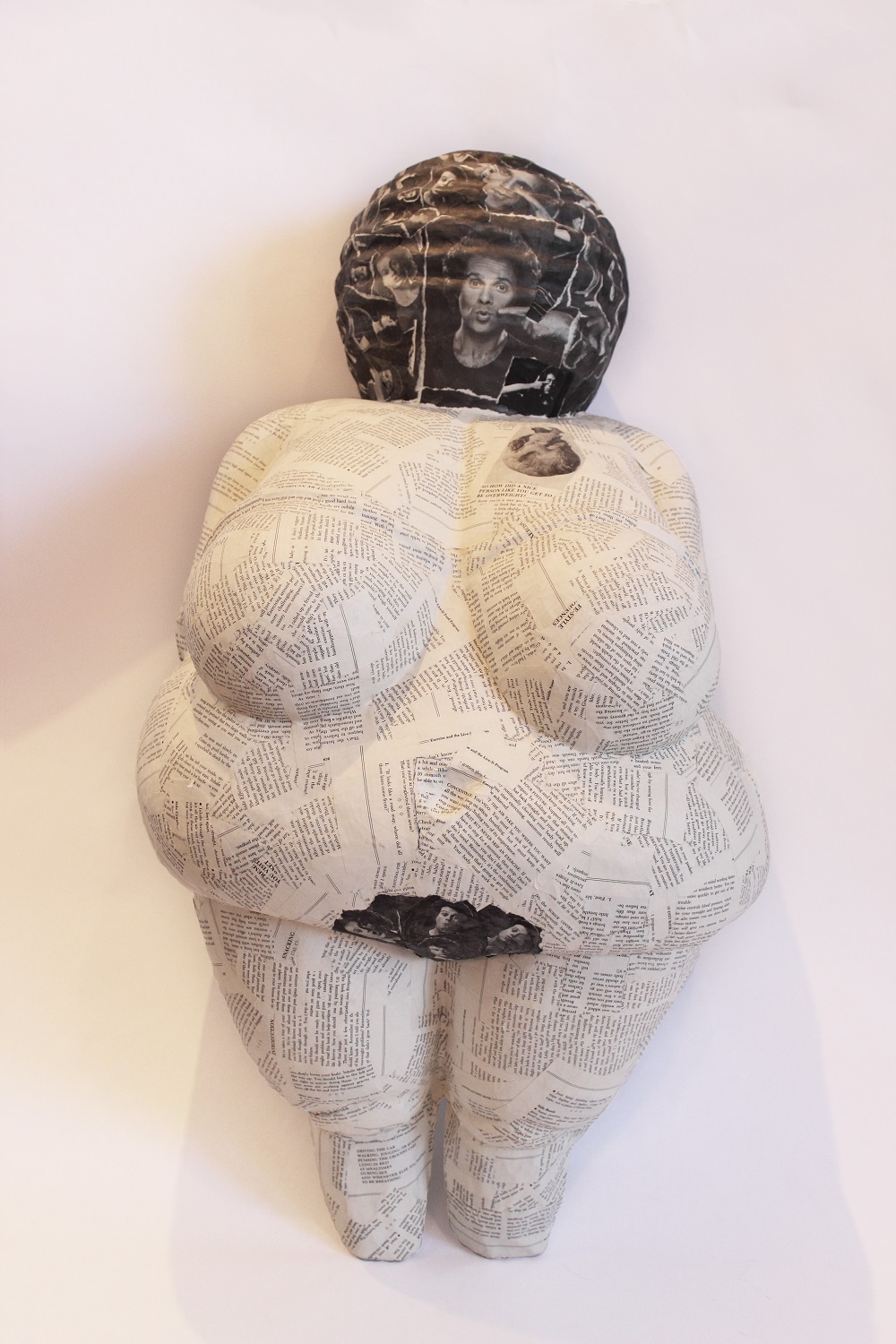
Simmons, “The Venus of Willendorf Project,” mixed media paper machè diet books, white flour and water, 36″ x 15″ x 16″, 2010
Brenda Oelbaum is a conceptual, multi-disciplinary, social practice artist whose work is deeply rooted in the tenets of feminism. Oelbaum has been shown internationally, including South Korea and China, and was included in the book Art in the Age of Terrorism by Graham Coulter-Smith. Inspired by pop culture and current events, she finds humor in the odd juxtapositions that inform her art making. Oelbaum is a graduate of the Ontario College of Art in Toronto, Canada ( OCADU ) where she studied painting in Florence, Italy, under the direction of the late Aba Bayefski and received an MA in Gallery Administration from F.I.T. in New York. She has worked with such prominent art dealers as Rosa Esman, and Gracie Mansion in NYC. Currently Oelbaum is the representative for the Feminist Art Project and a National Member of A.I. R. Gallery in Brooklyn, New York. She is an avid collector of art, and feels one of the best ways to support women in the arts is to collect their work.
Craig LeBlanc
Craig Le Blanc’s art practice reveals a long-standing interest in vulnerability, bravado, ego, loss and façade. In 1996 he began an extended focus on masculinity, work that examined the burden of socially constructed ideals upon what it means to be male. In 2016 Le Blanc redirected this investigation to explore identity politics more broadly, using confessional narratives that both parody and celebrate the perpetual reshaping of subjectivity with his exhibition She Loves Me. He Loves Me Not.
Le Blanc’s works negotiate the tension between protective veneer and blatant exposure. He creates robust and structured forms that mirror the gendered stereotypes they allude to such as aggressivity, virility, competitiveness, while simultaneously inverting those assumptions. We see this applied in a work like Piece with its ballet pink colouring diminishing its bravado, or in On Guard, an over-sized jockstrap—its giant refuge built to protect the six-foot artist himself. Similarly, in his piece One on One, two seventy inch replica joysticks representing both intimacy and competition, and the inherent isolation and connectivity of romantic union.
Known for craftsmanship and execution, Le Blanc employs many mediums and technologies in the search for the appropriate creative solution. He has worked within post-secondary design education for two decades, exposing him to methodologies that forever influence his artwork.
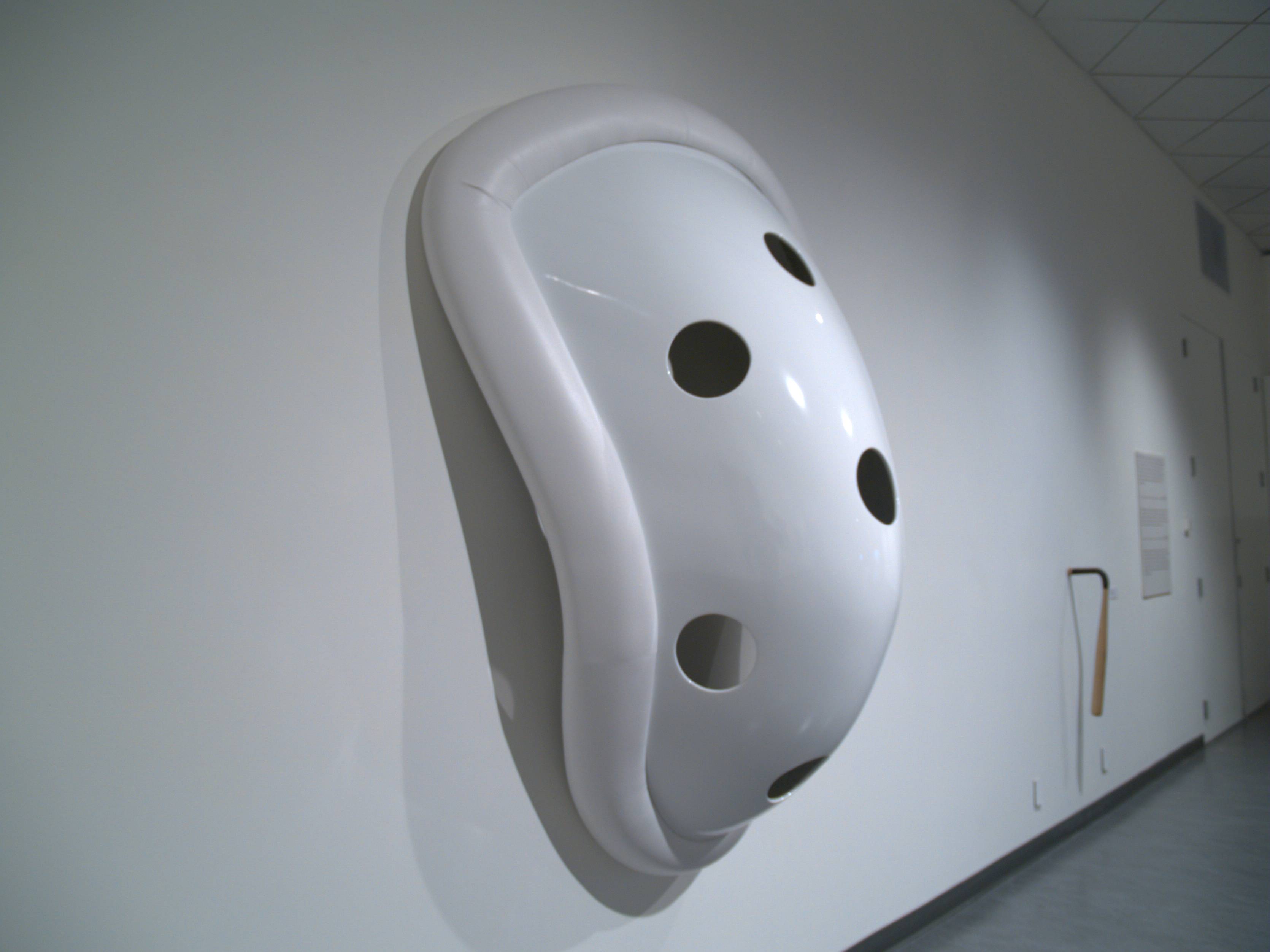 On Guard, 2007, Fibreglass, Vinyl, Upholstery Foam, 55″ x 77″ x 28″
On Guard, 2007, Fibreglass, Vinyl, Upholstery Foam, 55″ x 77″ x 28″
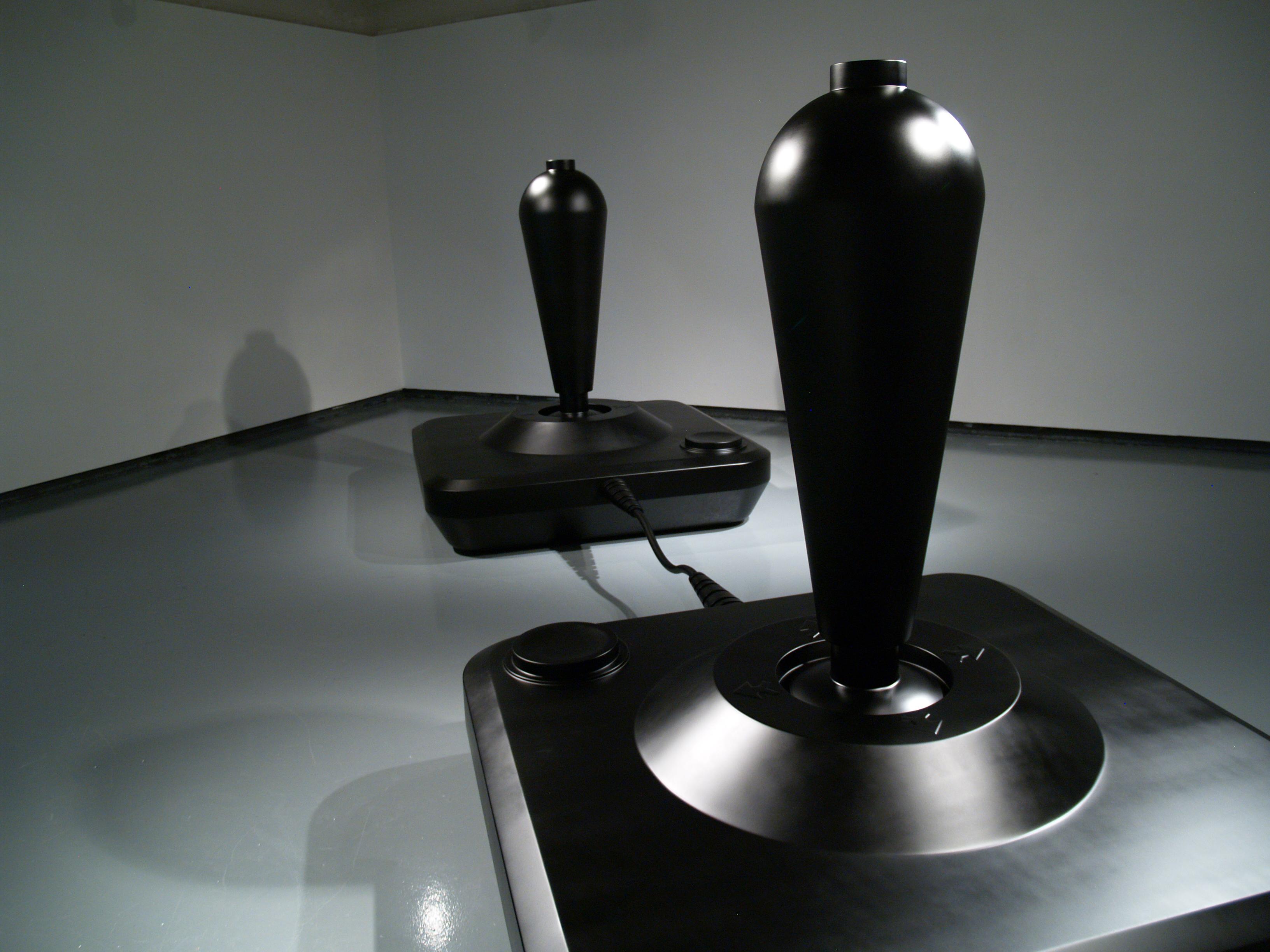 One on One, 2010, Steel, Aluminum, 204″ x 68″ x 72″
One on One, 2010, Steel, Aluminum, 204″ x 68″ x 72″
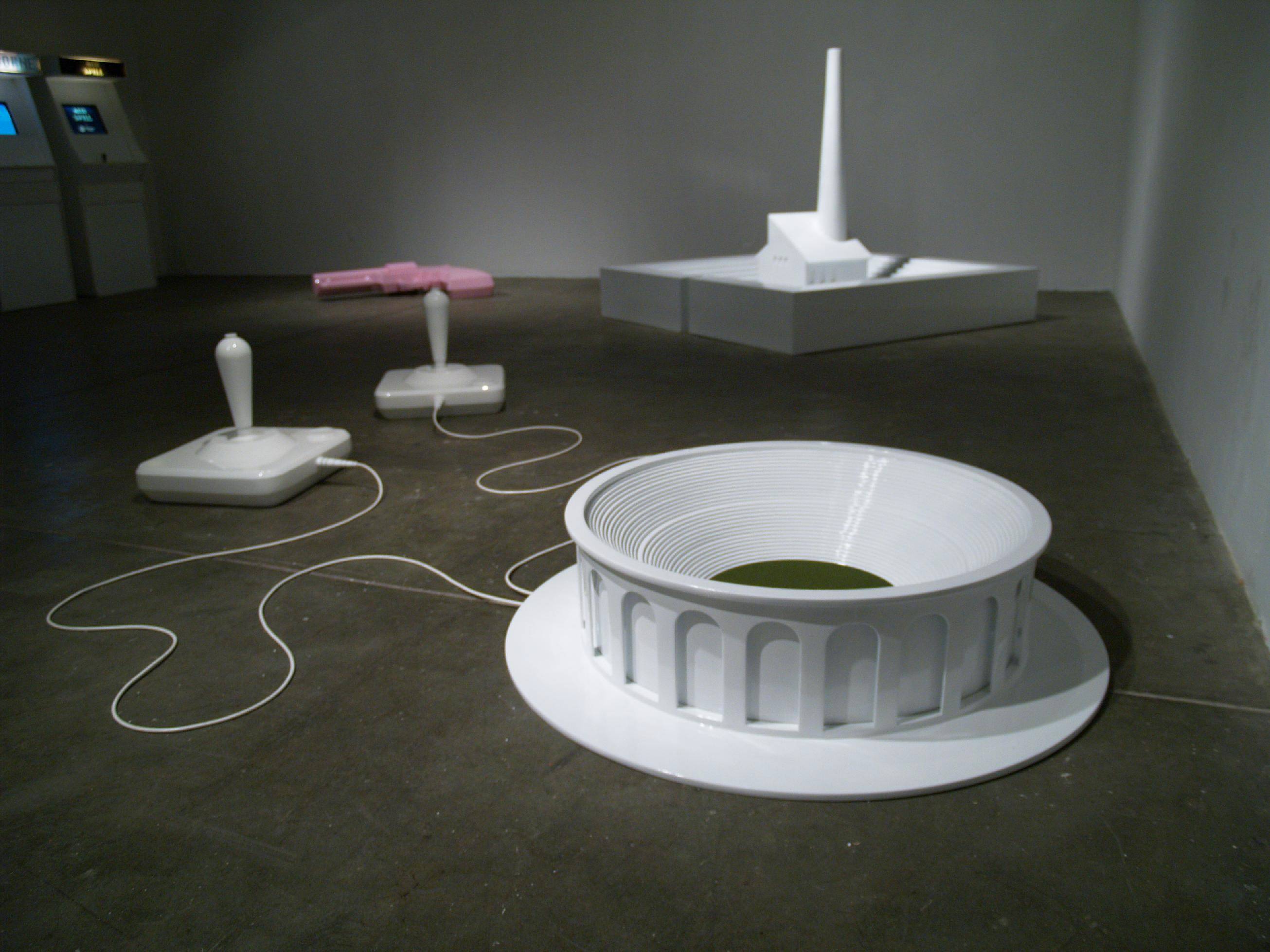
Form Study 2 (foreground), 2007, MDF, HD Foam, Plaster, Electrical Cable, Acrylic Urethane, Size: Joysticks 20″ x 20″ x 18″, Size: Stadium 48″ x 48″ x 16″
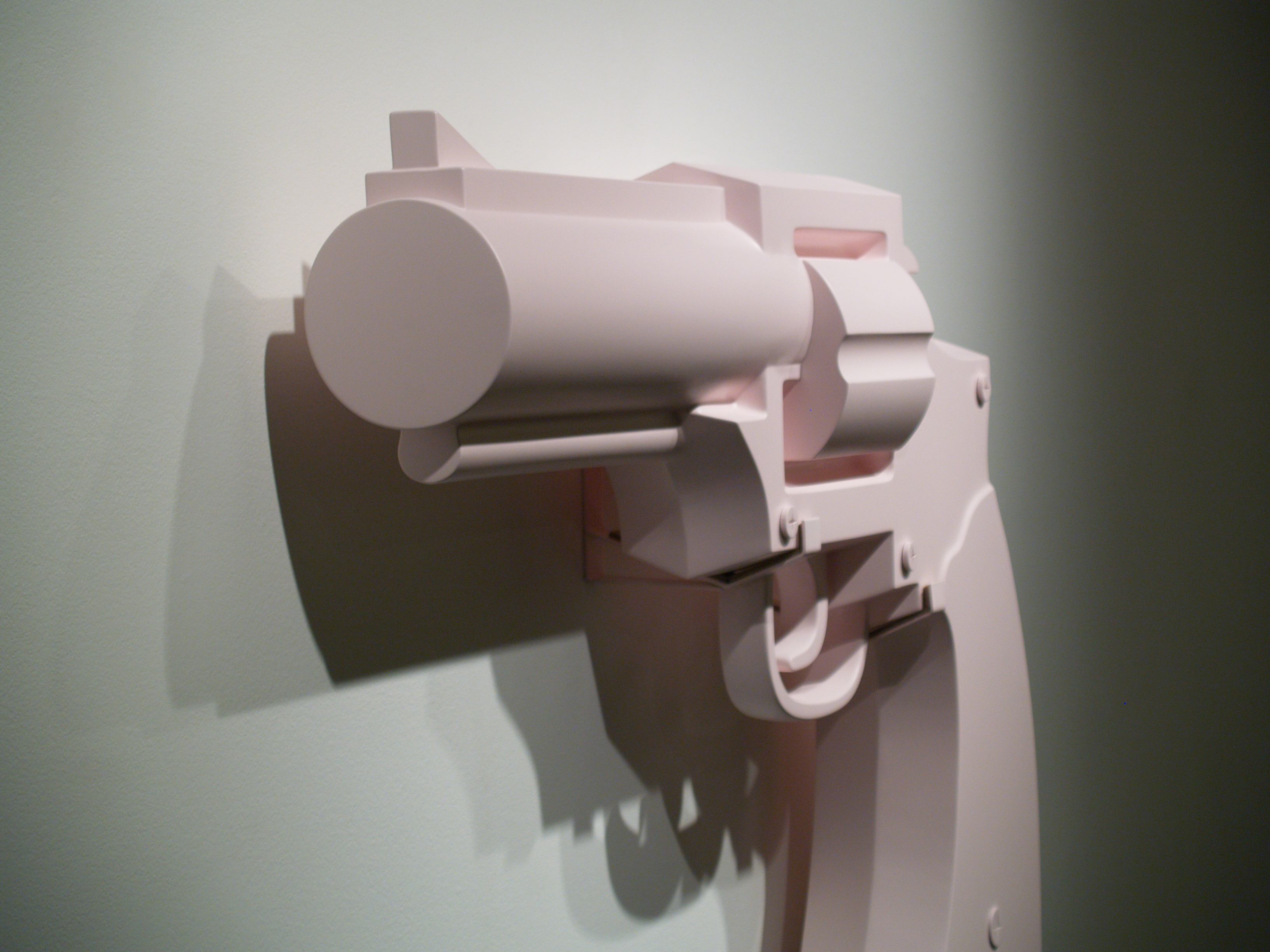
Piece, 2007, EPS Foam, Steel, Polyurea Hard Coat, Acrylic Urethane, 46″ x 34″ x 13′
In the mid-nineties Craig Le Blanc studied painting at the Nova Scotia College of Art and Design until a transformative period at École nationale supérieure des Beaux-Arts in Paris. This time, aligned with peers and the direct influence of Vincent Barré, Annette Messager and Christian Boltanski, altered Le Blanc’s perspective toward art making leading him to generate work wrapped in concept and gender. Le Blanc later received an MFA in Computational Media Design from the University of Calgary. Le Blanc operates as The White Studio, a comprehensive design studio focused on public art, graphic and object design. He has found success in the public art realm, creating three large scale pieces from 2010-2016, one of which (Henri 2010) won an Americans for the Arts/Public Art Network Year in Review award for 2011. He has exhibited extensively within Canada and the US and has works in several private, corporate and municipal collections. He lives and works in Edmonton, Alberta, Canada.
Nicole Shea ran CenterArts Gallery in Newburgh from 2009-2012 and later incorporated her arts experience into the leadership training at West Point. In 2015, she founded a large-scale sculpture walk outside the gates of West Point, which she has been curating together with the founding members of Collaborative Concepts in a community effort to revitalize the area via the arts. She is also Executive Editor of EuropeNow and Director of the Council for European Studies.
Published on July 6, 2017.

